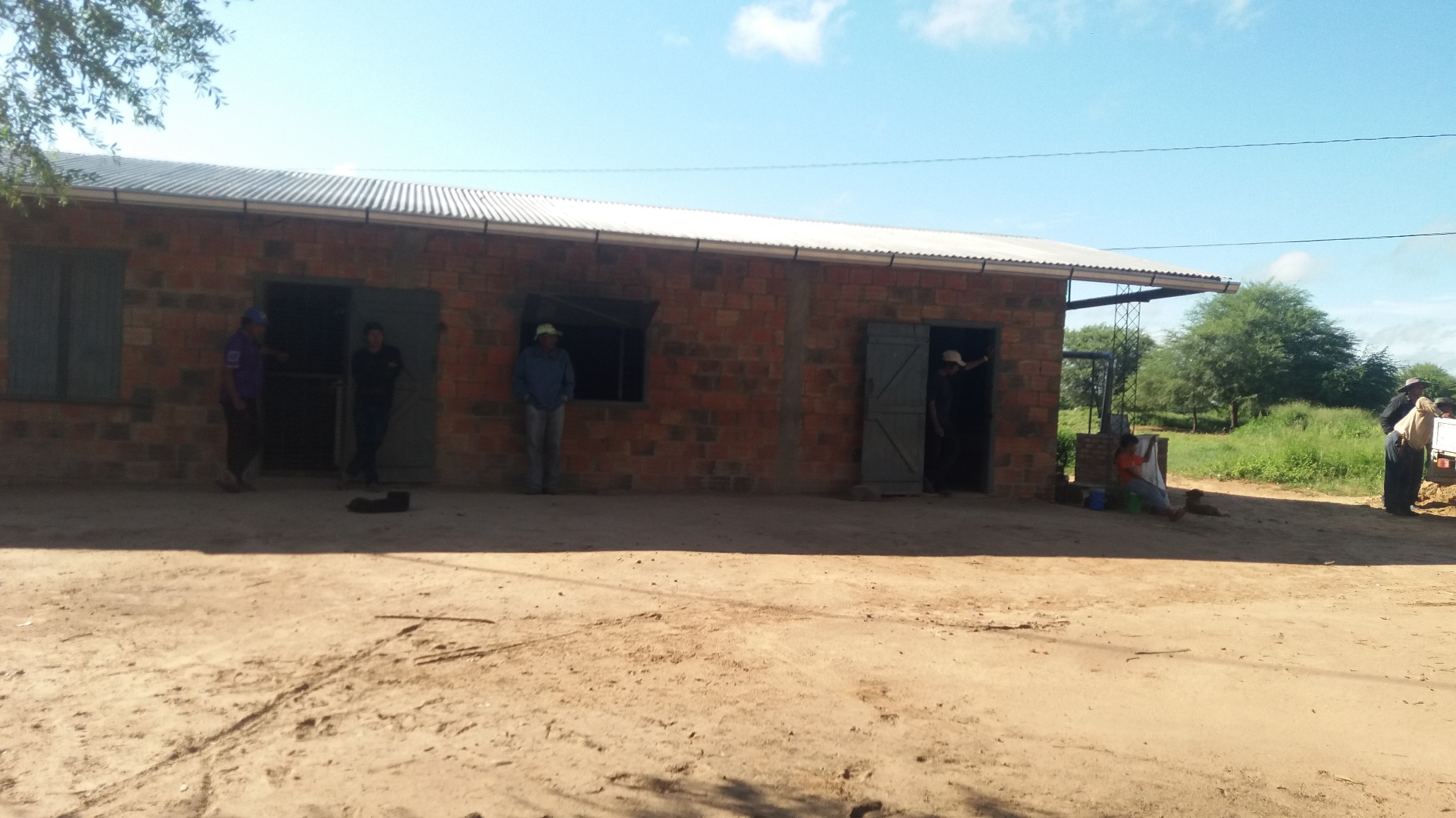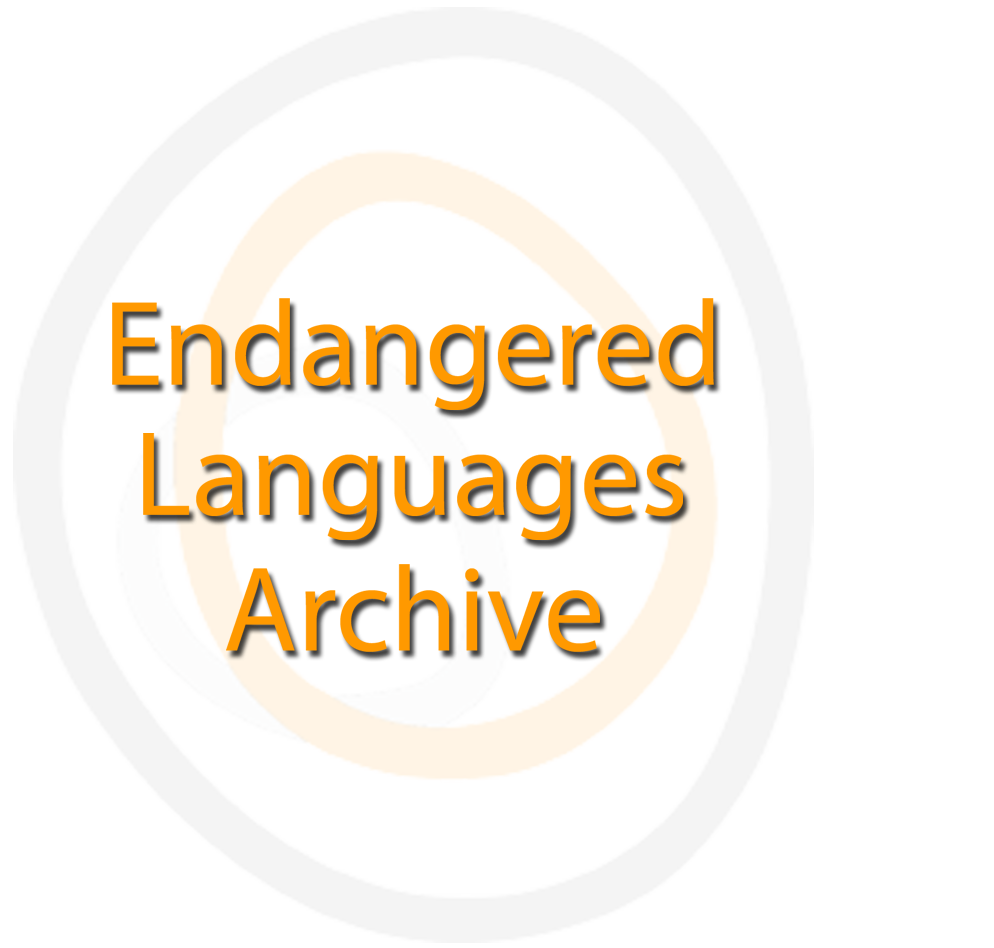A documentation of historical narratives amongst the Sanapaná (Enlhet-Enenlhet) of the Paraguayan Chaco

Landing page image for the collection “A documentation of historical narratives amongst the Sanapaná (Enlhet-Enenlhet) of the Paraguayan Chaco”. Click on image to access collection.
| Language | Sanapaná |
| Depositor | Jens Van Gysel |
| Affiliation | The University of New Mexico |
| Location | Paraguay |
| Collection ID | 0570 |
| Grant ID | SG0523 |
| Funding Body | ELDP |
| Collection Status | Collection online |
| Landing Page Handle | http://hdl.handle.net/2196/7aa154dd-cfb0-4850-a690-d7c0c9e81634 |
Podcast
Showreel
Summary of the collection
English: The Enlhet-Enenlhet language Sanapaná is spoken in seven communities in the Paraguayan department of Presidente Hayes. In two of these, La Esperanza and Anaconda, it is the main language of daily communication. This collection mainly documents the varieties spoken in La Esperanza, which is home to around four hundred people, and contains some data from Anaconda. The documentation is organised around the topic of Sanapaná history: it contains narratives by community elders about the founding of the community, testimonials about their youth, and procedural narratives about traditional cultural practices.
The data in this documentation were collected by Jens Van Gysel, doctoral student in linguistics at the University of New Mexico, in collaboration with the members of the La Esperanza community.
This collection is made up of a corpus of audio and video recordings, a portion of which is accompanied by transcriptions and translations. A small part is also provided with morpheme-by-morpheme glosses. In addition, it contains an initial lexicon, and sets of photos. /
Español: El idioma sanapaná, que pertenece a la familia lingüística enlhet-enenlhet, se habla en siete comunidades en el departamento de Presidente Hayes en Paraguay. En dos de estas comunidades, La Esperanza y Anaconda, es el principal medio de comunicación diaria. Esta colección principalmente documenta las variedades del idioma sanapaná habladas en La Esperanza, donde viven alrededor de cuatrocientos personas, con algunos datos de Anaconda también. La documentación se organiza alrededor del tema de la historia del pueblo sanapaná: contiene narrativas históricas por los ancianos sobre la fundación de la comunidad, testimonios sobre su joventud, y explicaciones sobre prácticas culturales tradicionales.
Los datos en esta colección han sido colectados por Jens Van Gysel, estudiante doctoral en la lingüística en la Universidad de Nuevo México, en colaboración con los miembros de la comunidad La Esperanza.
La colección consiste de grabaciones de audio y video, algunos de los cuales han sido transcritas y traducidas. Algunas también han sido analizadas y glosadas morfológicamente. Adicionalmente, contiene un léxico inicial, y series de fotos.
Group represented
English: This project presents documentary materials in the varieties of Sanapaná spoken in the La Esperanza community, located in the Paraguayan department of Presidente Hayes. This community was founded in 1964, when protestant Canadian missionaries acquired lands in the Paraguayan Chaco, and established a mission post there. In this mission post, small groups of Sanapaná from different areas of the Chaco were brought together. Some still lived a (semi-)nomadic life, a lifestyle that was common amongst the Sanapaná until the late 19th century. Others had lived on ranches of Paraguayan and Mennonite colonisers, mainly as agricultural labourers, and still others had lived in factory towns on the Paraguay river, such as Puerto Pinasco, where they worked in the tannin factories. /
Nowadays, many Sanapaná still work as labourers in the agriculture and cattle industry dominated by large land-owning Mennonites. Significant numbers of Sanapaná also move to nearby cities such as Loma Plata or Filadelfia, where they seek employment in, for example, motorbike repair shops. Because of this increased mobility, and increased contact with non-Sanapaná speakers (Paraguayans, Mennonites, and other indigenous people), the Sanapaná language is coming more and more under pressure. Even though it is still spoken in La Esperanza on a daily basis, more and more children grow up hearing mainly Guaraní. It is, therefore, necessary to document the various varieties of Sanapaná, in case this movement towards Guaraní continues.
Español: Este proyecto presenta materiales documentarias en las variedades del idioma sanapaná que se hablan en la comunidad La Esperanza, en el departamento de Presidente Hayes en Paraguay. Esta comunidad fue fundada en 1964, cuando misioneros protestantes canadienses compraron tierras en el Chaco paraguayo que usaron para establecer una misión. En la misión, se juntaron pequeños grupos de sanapaná de distintas zonas del Chaco. Algunos vivían de manera (semi-)nomádica, una manera de vivir que era bastante común entre los sanapaná hasta finales del siglo XIX. Otros vivían en estancias de colonos paraguayos y menonitas, como personal agricultural, y otros aún vivían en los pueblos industriales en el Río Paraguay como Puerto Pinasco, donde trabajaban en las fábricas tanineras. /
Hoy en día, muchos sanapaná trabajan todavía en las industrias agricultural y ganadera, que son dominadas por terratenientes menonitas. Grupos de sanapaná se trasladan a las ciudades cercanas de Loma Plata y Filadelfia también, donde buscan empleo en talleres, entre otros. Por causa de esta movilidad aumentada, y el contacto aumentado con la gente que no habla el idioma sanapaná (paraguayos, menonitas, y otros grupos indígenas), el idioma sanapaná se encuentra cada vez más bajo presión. Aunque se habla todavía diariamente en La Esperanza, cada vez más niños crecen escuchando el guaraní. Por eso, es necesario documentar las variedades del sanapaná, por si acaso se continúe este movimiento hacia el guaraní.
Language information
The indigenous Sanapaná group (autodenominated “nenhlet”) consists of almost three thousand people, less than a thousand of which speak their ancestral language (“nenhlet apayoma”). This language belongs to the Enlhet-Enenlhet language family (formerly known as Maskoyan or Lengua-Maskoy), together with Enlhet Norte, Enxet Sur, Enenlhet (Toba-Maskoy), Angaité and Guaná. Research on the lower-level family relations is more scarce, at least in part because of the lack of documentation on the languages of the family. Nevertheless, Enlhet Norte and Enlhet Sur are hypothesised to form a Western Enlhet-Enenlhet branch, while Enenlhet, Guaná, Sanapaná and Angaité together form an Eastern Enlhet-Enenlhet branch (Unruh and Kalisch 2003).
The Sanapaná have lived in the semi-arid lowlands of western Paraguay, known as the Paraguayan Chaco region, for generations. All six present-day Sanapaná communities are located in the department of Presidente Hayes, close to the border with the Boquerón department. Most of these communities have largely shifted to Paraguayan Guaraní as their language of daily communication: only in the communities of La Esperanza and Anaconda is it still used as a language of daily communication and are children still brought up mainly hearing Sanapaná in the home.
Other languages which are likely to be heard in this documentation are Spanish and Paraguayan Guaraní.
Special characteristics
English: Apart from its interest as a repository of the Sanapaná language, this collection serves as an archive of the collective memory of the Sanapaná people. It presents perspectives on the history of the Chaco region and its colonization that have rarely been put center stage, and documents a range of traditions of the Sanapaná, both those that are still practiced today and those that are no longer. Care was taken to include a variety of voices – men and women, people within and outside of community leadership, people who grew up on the farms in the inland Chaco and those that grew up in factory towns on the river, people who helped found La Esperanza as young adults and people who grew up in the new mission post as children. As Marino Ortega says in one of these recordings, it will allow people across the world to see that the Sanapaná are still alive. /
Español: Aparte de su interés como un repositorio del idioma sanapaná, esta colección sirve como un almacén de la memoria colectiva del pueblo sanapaná people. Presenta perspectivas en la historia del Chaco y su colonización a las que no se ha prestado mucha atención antes, y documenta una variedad de tradiciones de los sanapaná, tanto las que se pratican todavía hoy, y los que ya se han perdido. Se han incluido, con cuidado, una variedad de voces – hombres y mujeres, personas que están en posiciones de liderazgo dentro de la comunidad y personas que no lo están, personas que crecieron en las estancias en el interior del Chaco y personas que crecieron en los pueblos industriales en el río, personas que ayudaron a establecer La Esperanza como jóvenes y personas que crecieron como niños en la nueva misión. Como dice Marino Ortega en una de estas grabaciones, este proyecto permitirá a gente alrededor del mundo ver que los sanapaná viven todavía.
Collection contents
English: The bulk of this collection consists of around twenty-four hours of audio and video recordings of (monological and conversational) Sanapaná discourse on the history of the Sanapaná people and the La Esperanza community, and traditional cultural practices. Furthermore, there are:
- Recordings documenting the consent of the participants in the documentation project, either in Spanish or in Sanapaná.
- ELAN transcriptions, translations and interlinearisations which will be added as they are being processed.
- A PDF and FLEx version of an initial lexicon containing Sanapaná headwords with translations into Spanish and where possible Guaraní.
- Sets of photographs taken in and around La Esperanza, mostly dealing with fauna and flora found in the Chaco region. /
Español: La mayor parte de esta colección está compuesta de alrededor de veinticuatro horas de grabaciones de audio y video de discurso (tanto monólogos como conversaciones en sanapaná. Se tratan principalmente de la historia del pueblo sanapaná y de la comunidad La Esperanza, y de prácticas culturales tradicionales. Además hay:
- Grabaciones que documentan el consentimiento de los participantes en el proyecto de documentación, o bien en castellano o bien en sanapaná.
- Transcripciones y traducciones en ELAN y glosas morfológicas, que se irán añadiendo cuando se finalicen.
- Una versión PDF y FLEx de un léxico inicial con palabras en sanapaná con traducciones al castellano y donde posible al guaraní.
- Series de fotos tomadas en La Esperanza y sus alrededores, documentando principalmente la fauna y flora del Chaco.
Collection history
Engish: The materials in this collection were gathered between July and November 2019. By far the majority of them were gathered in La Esperanza, with a small number of recordings from Anaconda. All materials currently available were uploaded in July 2020.
Español: Los materiales en esta colección han sido colectados entre julio y noviembre de 2019. La mayoría fue colectada en La Esperanza, con algunas grabaciones de Anaconda. Todos los materiales disponibles ahora han sido subidos en julio de 2020.
Acknowledgement and citation
When referring to this collection as a whole, please use the following citation / Para citar esta colección completa, por favor usen la citación siguiente:
Van Gysel, Jens E. L. 2020. A documentation of historical narratives amongst the Sanapaná (Enlhet-Enenlhet) of the Paraguayan Chaco. Endangered Languages Archive. Handle: http://hdl.handle.net/2196/00-0000-0000-0012-D795-6. Accessed on [insert date here].
When citing individual recordings from this collection, please use the following format (using the participant names listed in the metadata for each recording) / Para citar grabaciones individuales de esta colección, por favor usen la citación siguiente (usando los nombres de los participantes listados en los metadatos de cada grabación):
[Session Participants]. 2020. [Session Title]. In Jens E. L. Van Gysel (Collector): A documentation of historical narratives amongst the Sanapaná (Enlhet-Enenlhet) of the Paraguayan Chaco. Endangered Languages Archive. [Session HANDLE]. Date: [Session Date].


